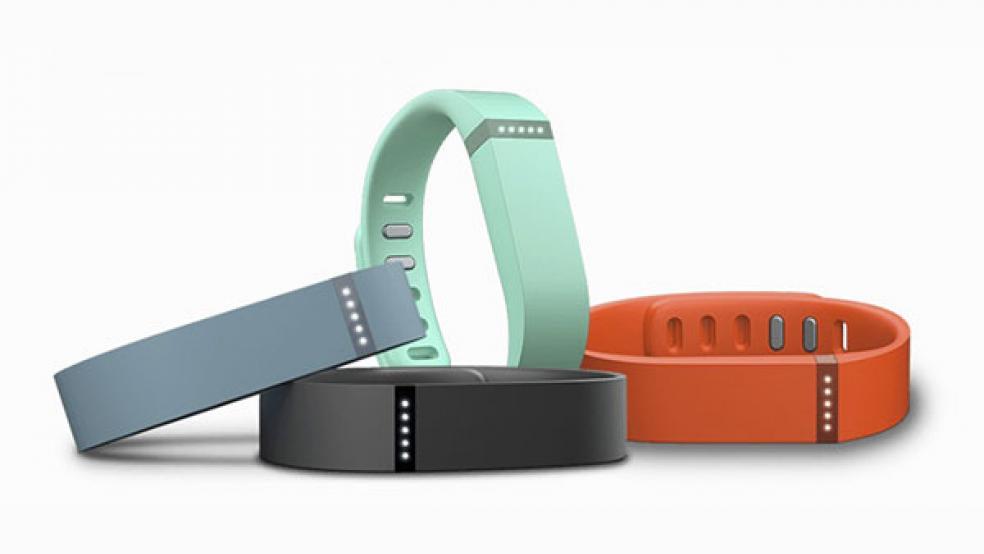A few years ago, Chad Sommer, 41, a long-time athlete from Chicago, thought he'd make an "official" investment in his health. To start, he bought a basic Polar heart rate monitor ($70).
This gadget - which many fitness buffs deem the "gateway drug" - soon led him to try several different workout-tracking apps and software programs.
After several weeks of recording the data without bothering to analyze it, Sommer gave up.
"It was too much of a hassle," Sommer says. And worrying about the numbers, or worse - being "married" to them - took away from the workout experience.
"Too many people are distracted and controlled by the data. I wanted to be present," Sommer says.
Liz Pulver, a landscape architect and entrepreneur in New York City, can relate. She, too, tried a few electronic exercise gadgets but found they weren't for her.
"My life is so overscheduled and I'm so 'under the gun' all the time that I just need to unplug and take in the sounds and sights around me when I'm out running," Pulver says. "It's not like I'm training for a marathon or anything, and I found that monitoring my every move was just sort of a waste of time."
The price of the gadgets can add up. Health and wellness experts like Aimee Nicotera, former fitness director at health resort and spa operator Canyon Ranch, say that exercise enthusiasts can easily spend a few hundred dollars on the devices, which can run from $90 to $400 each.
RELATED: 13 HOT NEW GADGETS YOU HOULD KNOW ABOUT FROM ces 2013
That includes wristbands like the Nike FuelBand, Jawbone, and Fitbit, to GPS-equipped bikecomputers and everything in between. These devices can track your every move, be it in time, distance, laps, strokes, steps, hours of sleep, or calories.
The market for wearable exercise devices is now a $1 billion business and is expected to grow 24 percent with 94 million devices sold by 2018, according to Adarsh Krishnan, senior analyst at New York-based market intelligence firm ABI Research.
Still, nearly 50 percent of those who try fitness gadgets don't stick with them, says Sarah Robb O'Hagan, president of Equinox Fitness, which operates a chain of luxury gyms across the country.
Fitness buffs untether themselves from their gadgets for many reasons. Often the device doesn't meet user expectations or is limited in what it can do. Users may feel the devices aren't accurate or haven't had a lasting impact. And sometimes, the novelty simply wears off.
"Two of my Nike devices ($200) died in less than three months," says Yeida Perez, a New York City-based dermatological assistant. "And I gave up on the Fitbit Flex ($100) because it kept going into sleep mode when I was boxing."
RELATED: 9 COMPLETELY USELESS GADGETS FROM CES 2013
In other cases, exercisers just can't be bothered to keep up with the gadgets and their stream of data.
"Some people get tired of the monitoring and want to gauge their workouts the old-fashioned way: by how they feel," says Nicotera.
Not 45-year old Bobby Glover, a web-based marketer from Cumming, Georgia.
In 2011, Glover started using a heart rate monitor and other electronic gadgets (as well as free apps like Noom CardioTrainer, Google MyTracks, MapMyRun, RunKeeper, and MapMyFitness) to help him achieve his weight loss goal.
Glover, who has lost 54 pounds to date, runs several apps in tandem. He does this for backup as well as accuracy purposes, should his most reliable, newest device - the Garmin 310XT ($250) he got as a surprise Christmas present from his wife last year - unexpectedly fail him or die.
RELATED: iCHILDREN: HOW APPLE IS CHANGING KIDS' BRAINS
"That would sabotage any workout," says Glover, who has been known to stop workouts at the Bounce Athletic Club (where the membership is $48 a month) should he discover that any pieces of his must-have devices - such as the Garmin strap or transmitter - are missing. "Thankfully, the gym is only about 15 minutes away," Glover notes.
Glover is part of a growing club of amateurs and pros alike who stay plugged in to these devices by getting hooked on the numbers.
And while most fitness enthusiasts haven't yet figured out how to fully make sense of the data, some won't work out without it, says O'Hagen.
Lauren Hasenhuttl, 44, of Los Altos, California, is one of those people. Hasenhuttl says the graphs and charts make it fun and keep her motivated.
Hasenhuttl has spent over $500 on watches and heart rate monitors over the past several years. While two devices have died on her (even after she got new batteries), judging by her recent purchase of the Nike Fuel Band ($150), her enthusiasm for gadgets is still very much alive.
"Year-to-date, I've burned 142,878 calories, been active almost 1800 hours, have done almost 1.7 million steps, gone over 681 miles and have 578.131 total Nike points," Hasenhuttl says.
Plus, if you don't record it, it's like it didn't happen, argues Wendy Tieck, of Dalton, Georgia, another gadget devotee.
"How far did I go? How fast did I go? Am I improving? Whether you're swimming, biking, or running, at the end of the day it's about results, reassurance, and being held accountable," says Tieck, 36. "In my book, a workout doesn't even 'count' unless you can quantify it."




